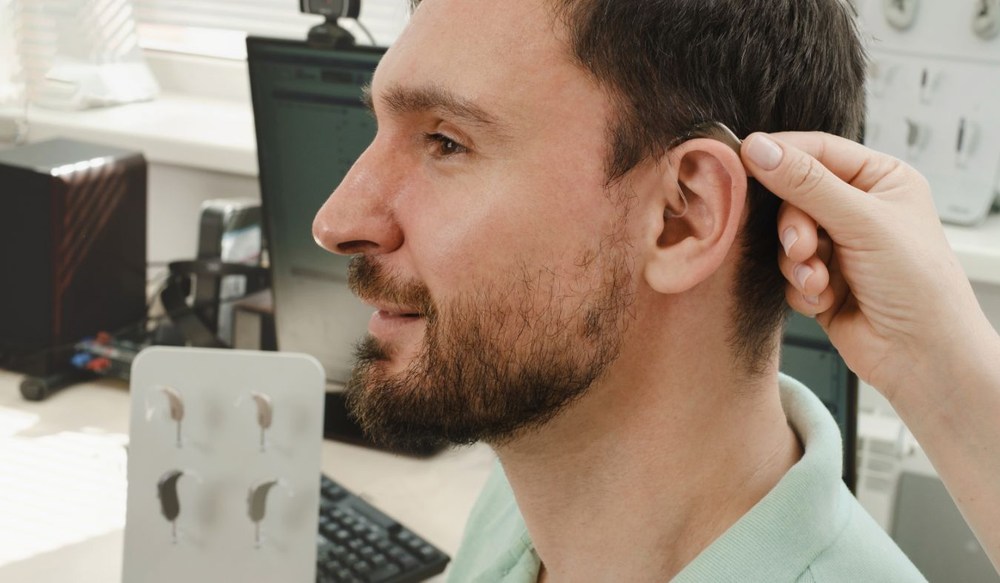How Hearing Care Professionals Address Patient Concerns
Visiting a hearing care professional is not just about testing your

By: admin | June 24, 2024
Biometric hearing aids mark a significant advancement in the field of wearable technology. These devices are engineered to seamlessly integrate with the natural anatomy of our ears, offering a personalized approach to hearing enhancement. By leveraging sophisticated biometric data and advanced algorithms, biometric hearing aids are able to adapt not only to the unique shape of your ears but also to your individual listening preferences and habits. This personalized adaptation ensures a more comfortable and natural auditory experience, enhancing your ability to engage with the world around you.
When considering solutions for hearing loss, exploring the capabilities of biometric hearing aids can be an intriguing option. These progressive devices go beyond traditional amplification by focusing on optimizing sound quality and improving speech understanding, particularly in challenging listening environments. As technology continues to evolve, biometric hearing aids represent a promising avenue for those seeking effective and personalized solutions for their hearing needs.
Hearing aids are created to enhance your auditory experience. They amplify the sounds around you, making it easier for you to hear. However, not all hearing aids are the same. Some offer high-tech features like noise reduction and smart device connectivity, while others focus on basic sound amplification. These devices can significantly improve your quality of life by making conversations and ambient sounds clearer. But they may require some time for adjustment and regular maintenance to ensure top performance. Understanding these basics is key when considering a hearing aid as a solution for your hearing loss.
The history of hearing aids stretches back centuries, with various devices and methods developed to assist individuals with hearing loss. One of the earliest known examples dates back to the 17th century when ear trumpets, simple funnel-shaped devices, were used to amplify sound for those with hearing impairment. These primitive aids evolved over time, with notable advancements occurring in the 19th and 20th centuries.
In the 19th century, the invention of the first electric hearing aid by Miller Reese Hutchison marked a significant milestone in hearing aid technology. This device used carbon transmitters to amplify sound, paving the way for further innovations in the field. The 20th century witnessed rapid progress in hearing aid design and functionality, with the development of vacuum tube technology leading to the creation of smaller, more portable devices.
The introduction of transistors in the 1950s revolutionized hearing aid design, enabling the production of smaller, more reliable aids that could be worn comfortably behind the ear or in the ear canal. The 1980s saw the emergence of digital signal processing technology, ushering in a new era of programmable and digital hearing aids capable of delivering customized amplification and advanced features like noise reduction and feedback cancellation.
Today, hearing aids continue to evolve, incorporating cutting-edge technologies like artificial intelligence, machine learning and connectivity features like Bluetooth streaming. These advancements have not only made hearing aids more effective and user-friendly but have also reduced the stigma associated with hearing loss, empowering individuals to seek treatment and improve their quality of life.
Biometric hearing aids offer a new level of customization. These advanced devices use unique ear characteristics to fine-tune sound delivery, offering a more natural listening experience. It’s like having a tailor-made suit for your ears!
But biometric hearing aids aren’t just about better sound quality. They also offer features like seamless connectivity with smartphones and other devices. This means you can easily adjust settings or even stream music directly to your hearing aids! And did you know that some hearing aids now come with rechargeable batteries? No more fiddling with tiny disposable ones! The world of hearing aid technology is advancing rapidly, and it’s exciting to see what’s next.
Biometric aids take customization to a whole new level. They use the unique biometric data of your ear to enhance sound quality. This means that the hearing aid is designed to work in harmony with your specific ear shape, which significantly improves the clarity and richness of sounds.
Biometric aids are truly changing the way we think about hearing loss solutions. With their personalized approach and advanced technology, they offer a superior listening experience tailored specifically for you.
Biometric calibration involves a detailed analysis of your ear’s unique characteristics. This data is then used to calibrate the hearing aid, ensuring it delivers sound perfectly suited to your ear’s shape and size.
The science behind this is quite interesting. Each person’s ear has its own unique structure, which influences how sound travels within it. By capturing these unique traits through biometric calibration, hearing aids can deliver sound that feels more natural and less distorted than with traditional models.
It’s also worth noting the role of artificial intelligence (AI) in modern hearing aids. AI technology helps in adjusting the settings of your device in real-time based on the sounds around you. This means that whether you’re in a quiet library or at a bustling party, your hearing aid can adapt to provide the best sound quality.
Switching to biometric hearing aids can feel like a big step, but it’s one that comes with significant benefits. First and foremost, these devices provide a highly personalized listening experience. They work in harmony with your unique ear structure, delivering sound that is specifically tailored to you. This level of customization can greatly enhance the clarity and richness of sounds, making conversations and ambient noise more enjoyable.
Another standout advantage is the advanced technology incorporated into these devices. Many biometric hearing aids offer seamless connectivity with smartphones and other smart devices. This feature allows you to easily adjust settings on your hearing aid or even stream music directly to it! It’s this blend of personalization and high-tech features that sets biometric hearing aids apart from traditional models.
However, despite all their advantages, getting used to new technology can sometimes be a challenge. You might find yourself grappling with understanding how to best utilize all the features offered by your new device. But don’t worry – help is available! Your local audiologist is there to guide you through this transition. They can help set up your device, explain its functions in simple terms and ensure you’re comfortable using it on a daily basis. The goal is for you to enjoy the full benefits of your biometric hearing aid and significantly improve your auditory experience.
Just like learning to ride a bike, adapting to biometric hearing aids may come with its own set of challenges. You might stumble upon some hurdles in the beginning, but with time and practice, you’ll soon be cruising smoothly.
Think of it as getting a new smartphone. At first, the numerous features and settings can seem overwhelming. But as you get more familiar with it, operating the device becomes second nature. Similarly, understanding and using your biometric hearing aid effectively might require some patience initially. But rest assured, your audiologist is there to guide you through this process and make the transition easier for you.
When considering the use of biometric hearing aids, it’s important to weigh the potential benefits against your personal needs and preferences. These advanced devices offer a high degree of personalization and impressive sound quality. However, they may also require more time to adjust and could be more complex to operate than traditional models. The best choice for you is one that meets your unique hearing needs and lifestyle.
Adopting new technology can sometimes be challenging. You might need some time to familiarize yourself with the various features and settings of your biometric hearing aid. Don’t hesitate to seek help from your audiologist if you find any aspect of using these devices difficult. They are there to assist you and ensure that you get the most out of your new hearing aid.
Finally, consider how comfortable you are with embracing technological advancements in general. If you’re someone who enjoys keeping up with the latest tech trends and loves experimenting with new gadgets, biometric hearing aids could be an exciting addition to your life! But if you prefer simplicity over sophistication, traditional models might serve you just as well. In either case, making an informed decision based on a thorough evaluation of your specific needs and preferences is key.
When it comes to finding the right hearing aid, there’s no one-size-fits-all solution. With advancements in technology, including biometric hearing aids, the options available today are more diverse than ever. Determining the best hearing aid for you involves considering factors like your lifestyle, hearing needs and personal preferences. A thorough evaluation by an audiologist can help identify the features and technology that will suit you best.
Whether you’re looking for discreet design, connectivity options or advanced sound processing, there’s a hearing aid out there to meet your unique requirements. By exploring the range of available technologies and working closely with your audiologist, you can find the perfect fit to enhance your hearing and improve your quality of life.
As we’ve seen, biometric hearing aids offer a new level of personalization and sound quality. They can transform your listening experience by tailoring it to the unique characteristics of your ear. If you’re interested in this innovative technology and want to know more about how it could benefit you, don’t hesitate to reach out.
We at Earzlink are here to guide you through every step of your journey towards better hearing health. Our team of audiologists is ready to answer all your questions about biometric hearing aids, their features and how they can enhance your auditory experience. You can reach our Lancaster, Reynoldsburg, Springfield or Vandalia, Ohio office by calling: (888) 293-5604.

Visiting a hearing care professional is not just about testing your
By: admin | December 21, 2025

Virtual reality (VR) technology is beginning to influence the way hearing
By: admin | August 21, 2025

Hearing aids have come a long way from simply making sounds louder.
By: admin | April 24, 2025
